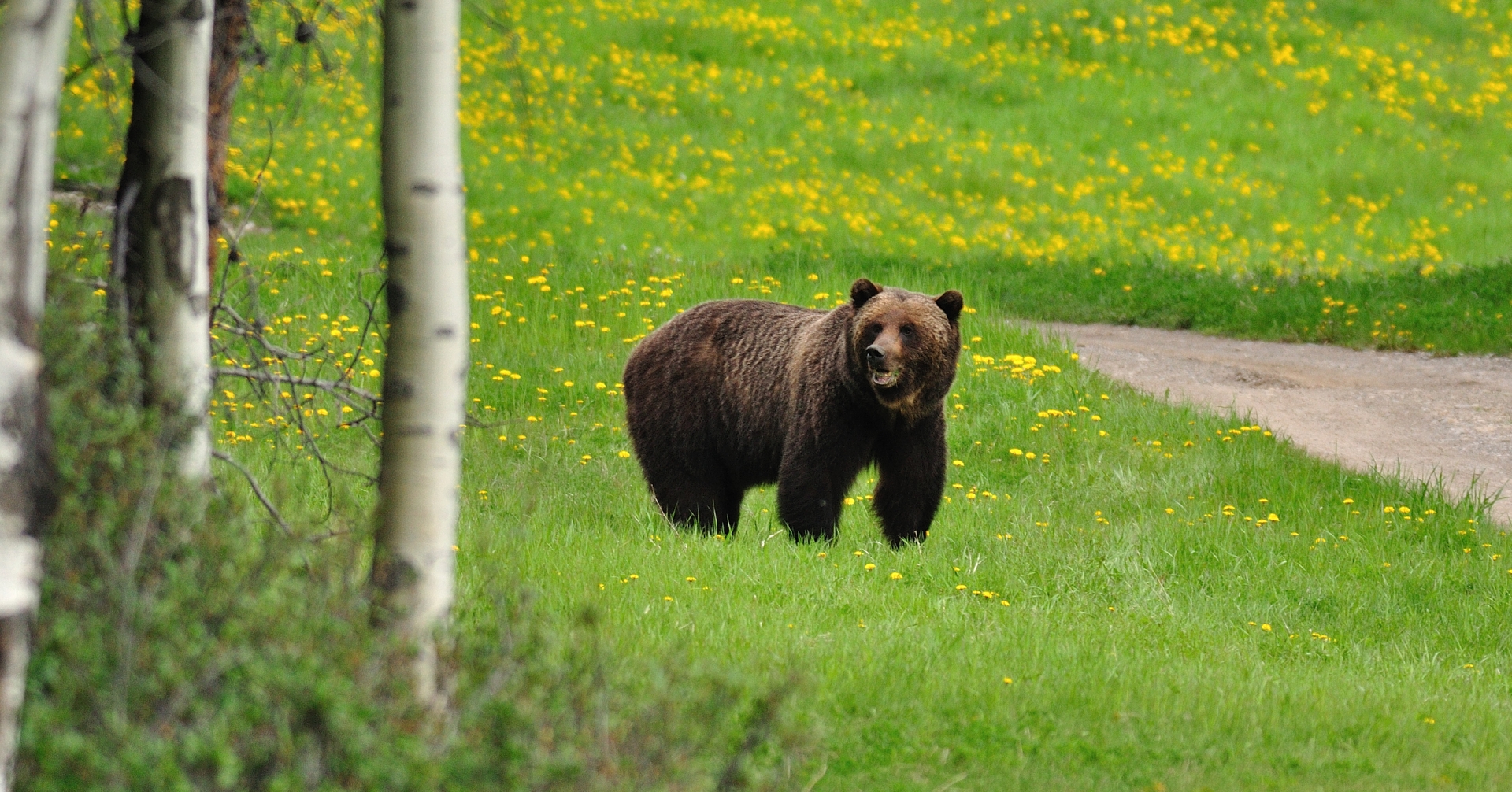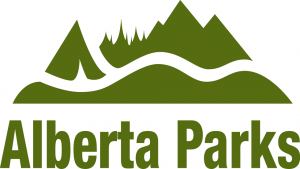Wildlife safety tips for your visit to Canmore and Kananaskis
Of all the natural wonders Alberta has to offer, the majestic, rugged beauty of Canmore and Kananaskis is in a league of its own. Along with the dramatic Canadian Rockies and iconic Bow and Kananaskis River views, wildlife sightings are also a fairly regular and exciting occurrence for visitors.
Here in Canmore and Kananaskis, we’re proud to coexist with wildlife and strive to protect the incredible ecosystems – that’s why it is extremely important to know what to do when you spot a bear or other wildlife on your outing. Keep these expert safety tips from our friends at the Biosphere Institute in mind and check out their website for more information to ensure both you and local animals can continue on without any incidents.
Like the Scout motto says, be prepared when you visit Canmore and Kananaskis. Alberta Parks is a good resource for checking trail reports and helping you plan your time in the great outdoors. You can also sign up with Wildsmart for a weekly bear report to see what trails may be affected by bear activity.
1. Always carry bear spray – and be ready to use it
Bear spray is not only helpful for bear encounters, but for run-ins with other types of wildlife such as cougars, wolves, coyotes, and elk as well. It’s a useful form of protection against wild animals, but should always be a last resort. Be sure to purchase or rent some from one of our local shops:
- Wapiti Sports & Outfitters
- Kananaskis Outfitters
- Sports Garage
- Canmore Sports Experts
- GearUp Mountain Sports and Rentals
- Rebound Cycle and Adventure Centre
Carry your bear spray in an easily accessible location like a chest or hip holster or a belt, not inside your backpack. This can save you valuable seconds if you encounter potentially aggressive wildlife. The animal must be within 4 metres (13 feet) in order for the spray to be effective. Wind or rain may reduce the spray’s effectiveness – be careful not to get in the path of the spray.
Not sure how to use bear spray? Check out the popular how-to video to see how it’s done!
2. Travel in groups and make lots of noise
Groups of four or more are less likely to be involved in a serious wildlife encounter. Clapping, shouting, singing, or simply talking loudly will work well to alert wildlife of your presence, particularly in areas with limited visibility or around rivers or streams. Bear bells or playing loud music aren’t recommended to rely on – the human voice carries much better!
3. Stick to official trails and respect trail closures and warnings
Trail closures and warnings are put in place for public safety – in many instances when wildlife is most sensitive to people. Be mindful of closures and warnings when planning your outdoor adventures – check in with the Biosphere Institute for local updates and search for your trail on the Alberta Parks website. If you’re a regular visitor to Canmore and Kananaskis, you can even sign up for a weekly bear report from the Biosphere Institute.
4. NEVER feed wildlife
Feeding a wild animal is not only dangerous for humans but for wildlife as well. An animal will quickly learn to associate humans as a source of food, leading to a situation where it may need to be relocated. Relocation of a wild animal results in about a 50% survival rate, according to the Biosphere Institute. Remember – a fed bear is a dead bear.
5. Keep your dogs on a leash
It is illegal to have your dog off-leash in Canmore, Kananaskis, and in provincial and national parks. Even the best dogs can pose a danger to wildlife as they may harass, stress, injure, or even kill wildlife. They can also trigger aggressive or defensive wildlife behaviours that can endanger dogs and their owners. Negative interactions between dogs and wildlife often end with the wild animal’s relocation or destruction.
6. Do NOT pull over for wildlife
If you spot a wild animal on the side of the road, slow down to ensure its safety, but do NOT stop the car to look at the animal. Stopping your car will cause stress to the animal and make it more likely that there will be a negative interaction, especially if people start leaving their vehicles to get a closer look.
1. Keep your distance and don’t run
Show your love for wildlife by giving animals their space. We know – seeing wildlife is exciting and it can be tempting to approach wild animals for a once-in-a-lifetime photo, but no amount of Instagram likes is worth putting your life (or theirs) in danger.
Elk and bear sightings are common on Canmore and Kananaskis. A good rule of thumb is to keep 100 metres (325 feet) between you and the animal. This is approximately the equivalent of three buses. Finding yourself in close proximity to an animal can be intimidating, but it is important to stay calm and NEVER run away from wildlife. If you see an animal before it notices you, quietly go back the way you came from. If it has seen you, talk calmly to the animal while slowly backing away. Do not turn your back to the animal until you’ve reached a safe distance. Be sure to read the Biosphere Institute’s Living Smart with Wildlife brochure to learn more about how to handle a wildlife encounter.
2. Use your bear spray
In the rare case of an aggressive confrontation, bear spray is your best defense. If you’re not sure how to use bear spray, watch this informative how-to video for instructions.
3. Alert Alberta Parks
If you spot a bear, cougar, wolf, or other wildlife in Canmore and Kananaskis, let us know by reporting it to Alberta Parks at (403) 591-7755.
Canmore and Kananaskis have an abundance of unique wildlife you won’t find anywhere else in the world. Grizzly and black bears tend to stay away from populated areas but are known to make appearances in the town of Canmore from time to time. You would be surprised how often bear spray might come in handy!
Elk are part of the local fabric of Canmore – they are spotted frequently around town, but it’s important to remember to keep your distance to avoid an aggressive encounter, particularly during mating or calving season. Moose, on the other hand, are more elusive and more likely to be seen in Kananaskis than in Canmore. Be very careful if you spot a moose – they are known to display aggressive behaviour.
Cougars, wolves, and coyotes are stealthy creatures and are rarely seen in the area. Learn what to do if you encounter one of these animals in the wild.
When it comes to insects, there aren’t too many you need to worry about. Some summers will produce more mosquitos, and at higher elevations, you’ll encounter a few horseflies. However, from April through June you’ll need to keep a close eye out for ticks who inhabit dry, sunny slopes. Ticks are at risk of carrying Lyme Disease and can latch on to people walking through bushes or tall grass. Protect yourself by wearing long pants tucked into socks or gaiters, and long sleeves. Do a thorough tick check after a day outside, and learn how to properly remove a tick in case you find one on you.
Few snakes live this far north, and the ones that do are unlikely to harm you.
Use bear-proof garbage bins
Canmore has taken great strides to minimize negative human-bear encounters. All garbage bins in town are bear-resistant if used properly. Make sure you dispose of any garbage, especially food waste, in a fully-secured bin to prevent attracting animals into a populated area.



